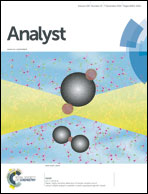Type 1 and Type 2 scenarios in hydrogen exchange mass spectrometry studies on protein–ligand complexes
Abstract
Hydrogen/deuterium exchange (HDX) mass spectrometry (MS) is a widely used technique for probing protein structure and dynamics. Exposure to D2O induces the deuteration of backbone N–H groups via a process that involves transient excursions to partially unfolded protein conformers. The resulting mass shifts can be probed by MS, usually in combination with proteolytic digestion and/or electron-based fragmentation. Studies on protein–ligand complexes represent a particularly important HDX/MS application. The prevailing view is that ligand binding should reduce deuteration rates, and it is often expected that this reduction will be most pronounced in the vicinity of the interaction site. Many protein–ligand systems do indeed behave in a fashion that is consistent with this paradigm. In this review we point out that the opposite effect may be encountered as well. Also, mixed scenarios are possible where ligand binding induces elevated HDX rates in some protein regions, whereas rates in other segments are reduced. We present a framework that links ligand-induced changes in HDX kinetics to alterations in the occupancy of excited protein conformers. Spontaneous ligand binding will always lower the free energy of the ground state. In contrast, the corresponding free energy shifts of excited states are largely unpredictable, giving rise to a range of possible HDX responses. “Type 1” scenarios, characterized by a reduction of HDX rates are just as feasible as “Type 2” behavior where deuteration is accelerated. Even “Type 0” phenomena may be encountered, where HDX rates are unaffected by the presence of ligand. Type 0/1/2 scenarios can coexist in the same protein (these terms are not to be confused with the EX1/EX2 expressions which refer to a different aspect of protein HDX). Allosteric effects and ligand-induced protein–protein contacts can affect the outcome of protein–ligand binding studies as well. In summary, comparative HDX measurements conducted in the presence and in the absence ligand provide a detailed fingerprint of biomolecular interactions. However, protein–ligand interactions can elicit a wide range of responses, and the interpretation of binding site mapping experiments may not always be straightforward.


 Please wait while we load your content...
Please wait while we load your content...